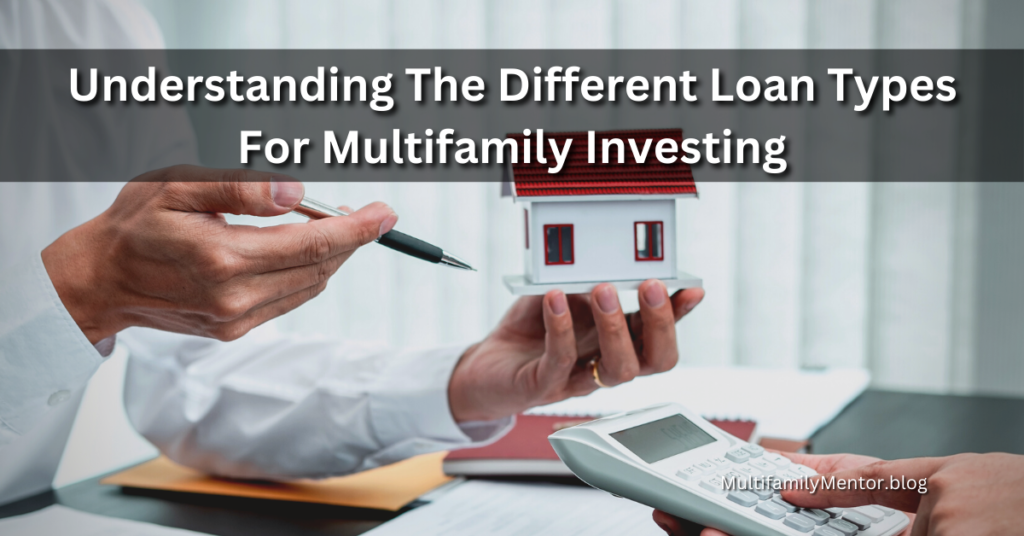Maximize your multifamily investment with our expert insights on loan types. Whether you're considering FHA loans or USDA loans, Understanding The Different Loan Types For Multifamily Investing is your ultimate resource.
Executive Summary
Understanding the various lending options is crucial if you're thinking about investing in a multifamily property. Investing in multifamily properties can be a great way to make money passively, but finding the correct financing is essential to your success.
We'll look at the several lending options accessible to multifamily investors in this post, including conventional loans, FHA loans, VA loans, and more. We'll go over the advantages and disadvantages of each choice so you can decide which kind of loan is best for your investing goals.
Introduction
Although buying multifamily buildings might be a wise financial decision, there are hazards involved. A major obstacle for investors is finding funding for their ideas. It might be challenging to choose the loan type that best suits your needs because there are so many different loan types available. We'll examine the numerous loan options accessible to multifamily investors in this post and give you the knowledge you need to make an informed choice.
Traditional Loans
One of the most popular loan options available to multifamily investors is the conventional loan. These loans are more expensive than other loan types and are often provided by banks and other traditional lending organizations. The following are some essential facts concerning conventional loans:
- Investors with high credit scores and large amounts of capital should use them.
- They frequently need a down payment equal to at least 20% of the property's cost.
- Interest rates might change based on the lender and the borrower's financial status, although they are frequently competitive.
- Repayment periods commonly range from 10 to 30 years.
FHA Loans
The Federal Housing Administration (FHA) backs FHA loans, which are created to increase homeownership opportunities for low- and moderate-income households. Although these loans were initially intended for single-family homes, multifamily properties may also use them. What you should know about FHA loans is as follows:
- Because they only need a down payment of 3.5% of the property's cost, they are a good choice for investors with tight budgets.
- Investors with poorer credit scores can obtain FHA loans more easily than they can conventional loans.
- Although these loans have higher costs than conventional loans, their interest rates are frequently cheaper.
- The normal repayment period is from 15 to 30 years.
VA Loans
Veterans, members of the military on current service, and their families are eligible for VA loans. Although they are frequently used to finance single-family houses, they can also be applied to up to four-unit multifamily buildings. The following are some essential details about VA loans:
- As there is no down payment necessary, they are a great choice for investors with low resources.
- Interest rates might change based on the lender and the borrower's financial status, although they are frequently competitive.
- Private mortgage insurance (PMI) is not necessary for VA loans.
- The normal repayment period is from 15 to 30 years.
USAID Loans
The U.S. provides backing for USDA loans. They are intended to aid low- and moderate-income families in purchasing homes in rural areas. Although these loans were initially intended for single-family homes, multifamily buildings with up to four units are also eligible to use them. What you should know about USDA loans is as follows:
- As there is no down payment necessary, they are a great choice for investors with low resources.
- Although these loans have higher costs than conventional loans, their interest rates are frequently cheaper.
- Because of income restrictions, USDA loans might not be accessible to all investors.
- The normal repayment period is from 15 to 30 years.
Conduit Loans
Short-term loans known as “bridge loans” are used to cover the financial gap between buying a new home and selling an existing one. Multifamily investors that need to finance a new property before selling their current property frequently use these loans. The following are some essential facts about bridge loans:
- Although having more expensive interest rates than other loan types, they are made to be paid back promptly.
- Repayment periods commonly range from six to twelve months.
- Investors having a sizable amount of equity in their current property should use them.
- As traditional lending institutions don't frequently offer them, finding a bridge loan can require working with a private lender.
Conclusion
Understanding the many lending options accessible to you is crucial if you want to make a wise financial decision when investing in multifamily homes. Each loan type, including bridge loans, FHA loans, VA loans, USDA loans, and conventional loans, has advantages and disadvantages. You may choose the loan type that best suits your investment goals by being aware of the key characteristics of each loan type.

